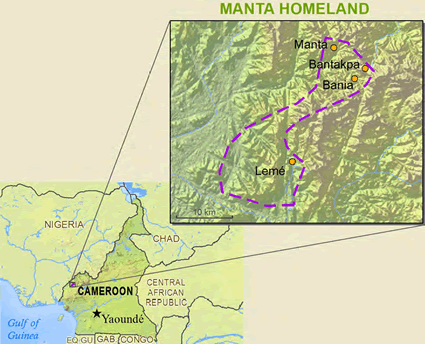The Manta speaking people can be roughly divided into two broad groups, a northern constituency and a southern constituency. Northern Manta refer to themselves as Banta or Amasi. The Southern Manta use the name Manta for themselves. Culturally, historically, and linguistically they are essentially homogeneous. As a whole, they are geographically isolated. The nearest road is at least a day's hike from the nearest Manta village.
Banta people live in approximately fifteen major villages stretching over a twenty-mile range. The terrain is mountainous and thickly forested.
Some villages have no church, no clinic and no school. Teachers are somewhat favorable toward the introduction of Manta into the school curriculum. Despite their desire to learn English, comprehension of it remains low. Pidgin is much more widely understood and used, occasionally even in the classroom.
Local traditional religion plays an active role in the lives of most Manta people, even professing Christians. Syncretism is high, but church leaders have expressed a felt need for Scriptures in Manta. Church members themselves have indicated an interest in mother-tongue literature and literacy. Overall attitudes towards Bible translation and literacy are positive, though they believe English (and French for some) is more important than Manta. One difficulty may be getting people from different denominations to work together.
Manta and Pidgin are used throughout church services. They would be better served by the Pidgin New Testament. But any spiritual depth in the faith and a grasp of many fundamental Christian truths can only be achieved by having the Word of God in translated into Manta.
The Amasis need a spiritual hunger that will compel them to embrace Christ no matter what the cost.
Pray for the Holy Spirit to bring spiritual depth to Banta churches, leading them to abundant life in Christ.
Pray that soon Banta Christians will disciple others who will disciple people outside their tribe.
Pray for the Lord to raise up healers among them to heal in the name of Jesus Christ.
Scripture Prayers for the Amasi, Banta in Cameroon.
| Profile Source: Joshua Project |











